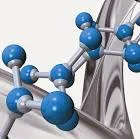This is the future.Let's see when we can use it.
A laser, the alternative to punctures for diabetes patients
Diabetes patients should measure the blood sugar level, and for this they must undergo punctures on fingers that extract drops of blood and allow to show the result with portable glucometers.The process is often uncomfortable and should be repeated several times a day, which makes it annoying and invasive.
To solve it a team of researchers at the University of Leeds has created a device that uses a low power laser to measure blood glucose levels without penetrating the skin.The system could avoid the inconvenience, pain and discomforts offered by current methods, and its integration is already being raised in a "wearable" solution.
No punctures
The glucose monitor would also save costs to hospitals and medical institutions, and the continuous monitoring that this development provides would allow for example to avoid potential implants in patients to check those levels: the aforementioned alternative in the form of a wearable device would make that option unnecessary.
The Glucosense Diagnostics has licensed technology, which makes use of a silicon glass with ions that react with a fluorescence of infrared light when a low power laser reaches them.This fluorescent signal varies according to blood glucose concentration, and the device measures the amount of time that fluorescence lasts and uses that data to calculate the glucose level in the blood flow of a person without the need for a needle.The process, they explain at the University of Leeds, has 30 seconds.
Those responsible for this development explain that they hope to develop two versions of the device: one in the form of a tactile sensor similar to a mouse for the computer, and the other will be a peaceful device that will allow the continuous monitoring of these patients.That last option will be especially valuable in young people with type 1 diabetes, these researchers explain.
However, as explained from the Diabetestipo1 website, there are literally dozens of non -invasive measurement projects that do not just go to the market: we will see if the development of these researchers changes the trend.
Source: Link




